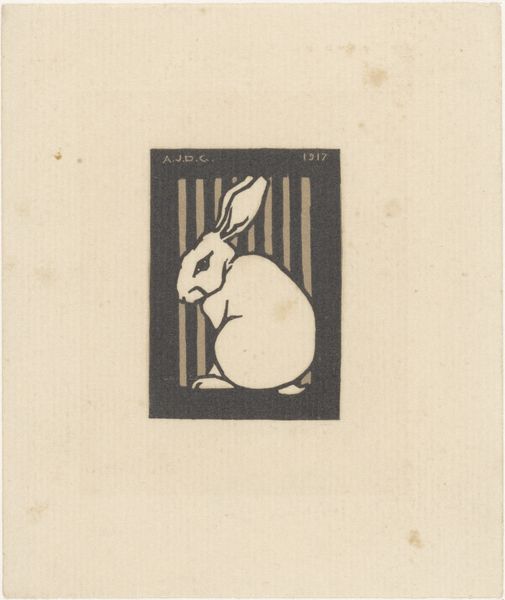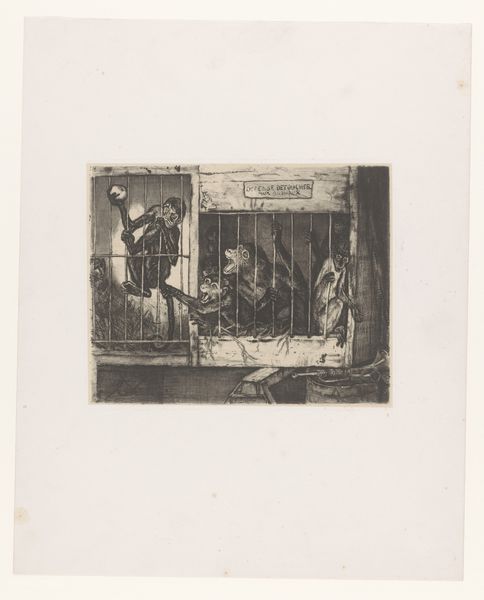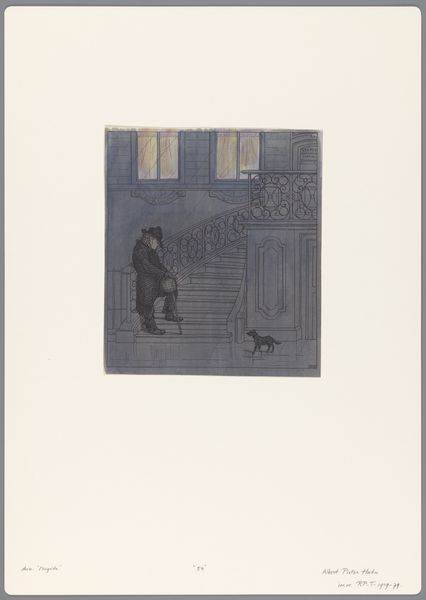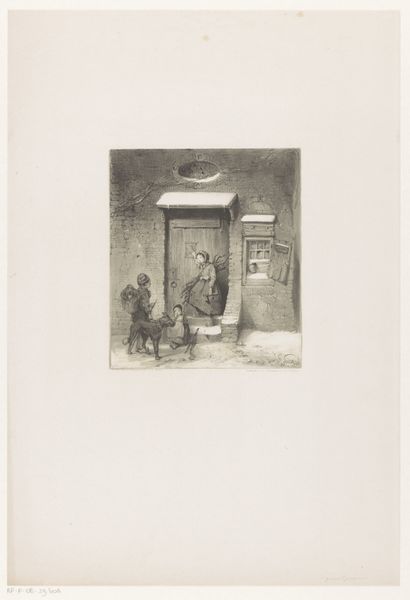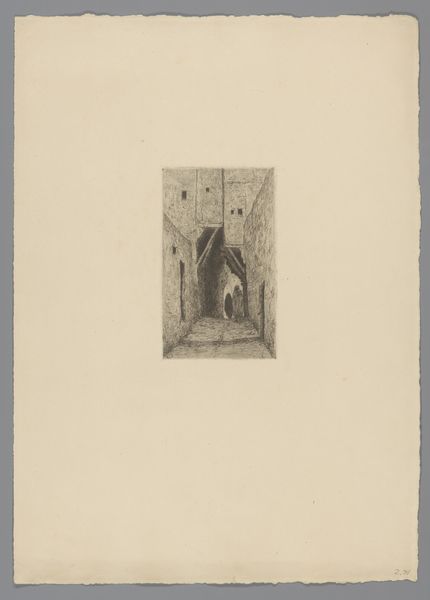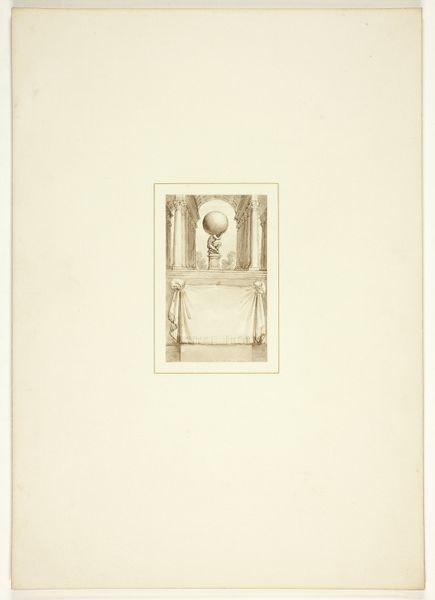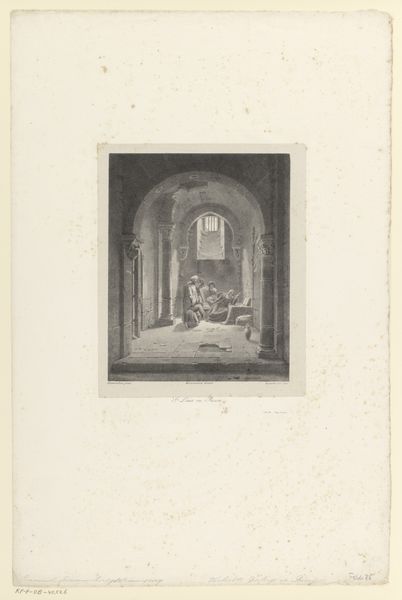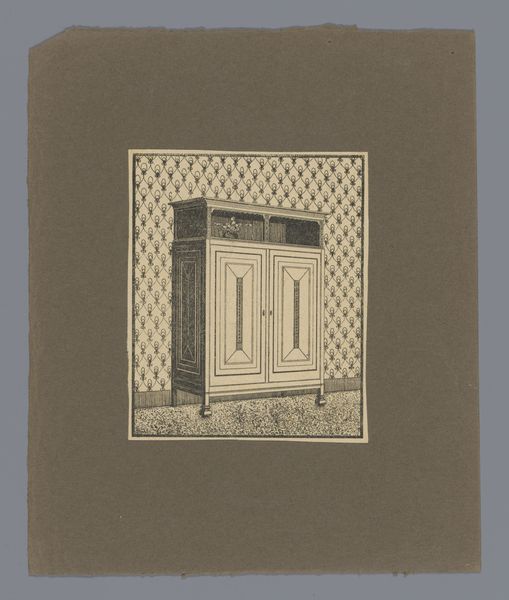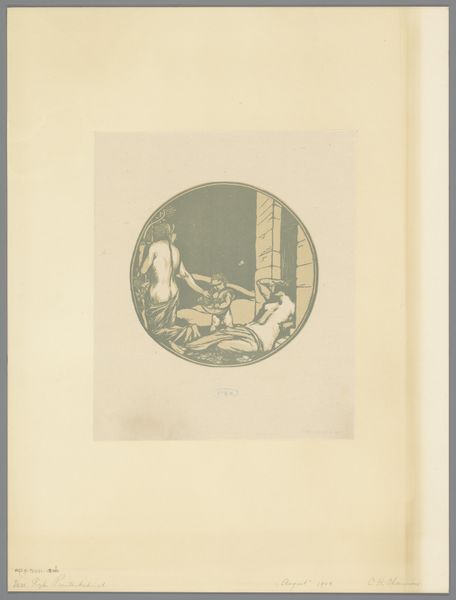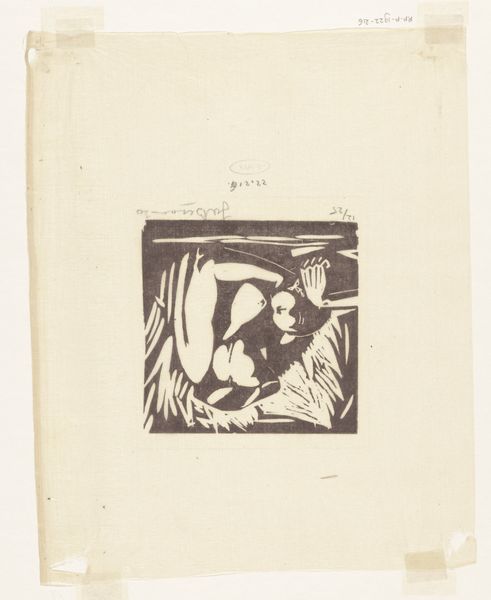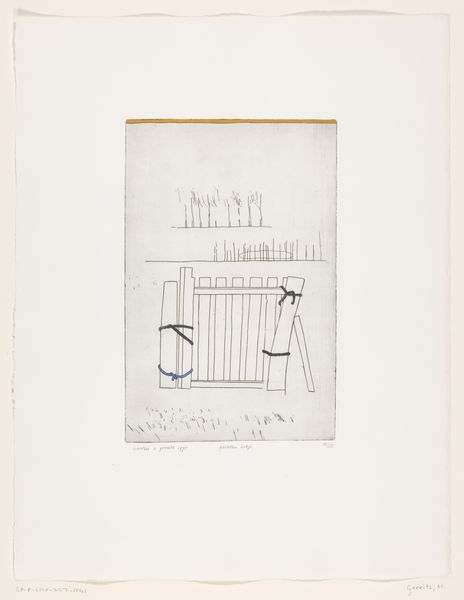
Ontwerp voor een politieke spotprent met een gekooide vredesduif: Toekomst 1887 - 1918
0:00
0:00
print, etching
#
portrait
#
narrative-art
#
symbol
# print
#
etching
#
symbolism
Dimensions: height 260 mm, width 229 mm
Copyright: Rijks Museum: Open Domain
Curator: Albert Hahn's "Ontwerp voor een politieke spotprent met een gekooide vredesduif: Toekomst", which translates to "Design for a political cartoon with a caged peace dove: Future," etched sometime between 1887 and 1918, offers a striking visual commentary. Editor: It’s stark, isn't it? The dove, so clearly a symbol of peace, trapped within what appears to be a helmet, the bars of the cage pressing in. The gray palette, contrasted by hints of yellow in the background, further amplifies a sense of oppression. Curator: Absolutely. Let’s consider Hahn's position. As a socialist artist, he routinely critiqued political systems and social injustices. The etching is not just about aesthetics; it is about labor. The very act of etching such a detailed image speaks to Hahn’s commitment. The availability of this print would further democratize the message it sends to those who viewed it, and who it sought to engage with his perspective. Editor: I agree with the emphasis on process and democratization of a clear message. Formally, the cage transforms the helmet into a prison, right? The dove straining to offer an olive branch amplifies the message, with sharp lines and hatching that articulate despair, particularly around the face of the bird. Curator: Precisely! What strikes me is that a helmet made for war is rendered here into an instrument of pacifist longing. War represses the potential for peace and, as such, this can be seen as the essence of Hahn's social criticism. It's a print meant for the masses, to provoke conversation around production for, and cost of, peace. Editor: The dove's whiteness and the olive branch, they serve as a powerful counterpoint to the dark helmet. There’s something so vulnerable about its confined state and how its composition speaks to the dangers of constrained hope. I can appreciate this etching, by using this symbology, offers viewers an opportunity to question who truly benefits from militaristic systems. Curator: Hahn pushes viewers to examine what is at stake and who pays the price for such policies. Editor: Yes, a visual reminder to consider, through this piece, how conflict and hope interact to challenge those traditional structures, which continue to resonate to this very day.
Comments
No comments
Be the first to comment and join the conversation on the ultimate creative platform.
